Related Research Articles

Laboratory glassware refers to a variety of equipment used in scientific work, and traditionally made of glass. Glass can be blown, bent, cut, molded, and formed into many sizes and shapes, and is therefore common in chemistry, biology, and analytical laboratories. Many laboratories have training programs to demonstrate how glassware is used and to alert first–time users to the safety hazards involved with using glassware.

Glassblowing is a glassforming technique that involves inflating molten glass into a bubble with the aid of a blowpipe. A person who blows glass is called a glassblower, glassmith, or gaffer. A lampworker manipulates glass with the use of a torch on a smaller scale, such as in producing precision laboratory glassware out of borosilicate glass.
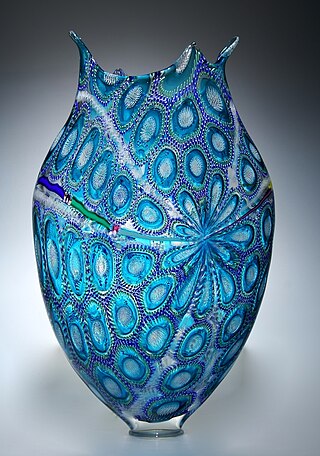
Studio glass is the modern use of glass as an artistic medium to produce sculptures or three-dimensional artworks. The glass objects created are intended to make a sculptural or decorative statement. Though usage varies, the term is properly restricted to glass made as art in small workshops, typically with the personal involvement of the artist who designed the piece. This is in contrast to art glass, made by craftsmen in factories, and glass art, covering the whole range of glass with artistic interest made throughout history. Both art glass and studio glass originate in the 19th century, and the terms compare with studio pottery and art pottery, but in glass the term "studio glass" is mostly used for work made in the period beginning in the 1960s with a major revival in interest in artistic glassmaking.

Nicolaas Bloembergen was a Dutch-American physicist and Nobel laureate, recognized for his work in developing driving principles behind nonlinear optics for laser spectroscopy. During his career, he was a professor at Harvard University and later at the University of Arizona and at Leiden University in 1973.
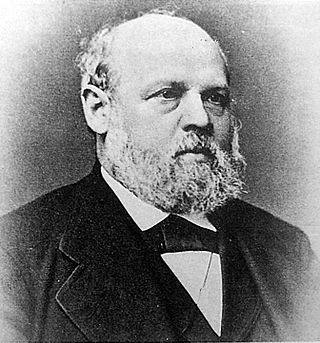
Johann Heinrich Wilhelm Geißler was a skilled glassblower and physicist, famous for his invention of the Geissler tube, made of glass and used as a low pressure gas-discharge tube.
Ames National Laboratory, formerly Ames Laboratory, is a United States Department of Energy national laboratory located in Ames, Iowa, and affiliated with Iowa State University. It is a top-level national laboratory for research on national security, energy, and the environment. The laboratory conducts research into areas of national concern, including the synthesis and study of new materials, energy resources, high-speed computer design, and environmental cleanup and restoration. It is located on the campus of Iowa State University.

Borosilicate glass is a type of glass with silica and boron trioxide as the main glass-forming constituents. Borosilicate glasses are known for having very low coefficients of thermal expansion, making them more resistant to thermal shock than any other common glass. Such glass is subjected to less thermal stress and can withstand temperature differentials without fracturing of about 165 °C (300 °F). It is commonly used for the construction of reagent bottles and flasks, as well as lighting, electronics, and cookware.
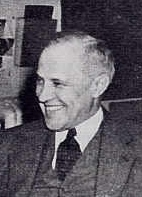
Karl Taylor Compton was a prominent American physicist and president of the Massachusetts Institute of Technology (MIT) from 1930 to 1948.

Chemistry education is the study of teaching and learning chemistry. It is one subset of STEM education or discipline-based education research (DBER). Topics in chemistry education include understanding how students learn chemistry and determining the most efficient methods to teach chemistry. There is a constant need to improve chemistry curricula and learning outcomes based on findings of chemistry education research (CER). Chemistry education can be improved by changing teaching methods and providing appropriate training to chemistry instructors, within many modes, including classroom lectures, demonstrations, and laboratory activities.

Salem Community College (SCC) is a public community college in Salem County in the U.S. state of New Jersey. Salem Community College's main 11-acre (45,000 m2) campus is in Carneys Point Township. SCC is authorized to grant associate degrees, including Associate in Arts, Associate in Fine Arts, Associate in Science, and Associate in Applied Science certificates. SCC also offers the only degree program in the US for scientific glassblowing.
Oak Ridge Associated Universities (ORAU) is a consortium of American universities headquartered in Oak Ridge, Tennessee, with offices in Arvada, Colorado, Cincinnati, Ohio, and staff at other locations across the country.

An engineering technician is a professional trained in skills and techniques related to a specific branch of technology, with a practical understanding of the relevant engineering concepts. Engineering technicians often assist in projects relating to research and development, or focus on post-development activities like implementation or operation.

The American Ceramic Society (ACerS) is a nonprofit organization of professionals for the ceramics community, with a focus on scientific research, emerging technologies, and applications in which ceramic materials are an element. Since its inception, ACerS has been committed to driving innovation, facilitating the exchange of knowledge, and fostering collaborations within the ceramics community. It is located in Westerville, Ohio.

The Imam Hossein Comprehensive University is a public university located in Tehran, Iran.

Paul Joseph Stankard is an American artist, flameworker and author.
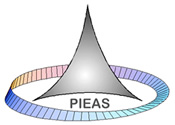
The Pakistan Institute of Engineering and Applied Sciences (PIEAS), is a public research university located in Islamabad, Pakistan. The university is modelled on international standards with a strong focus on the scientific advancement of the nuclear science-related STEM fields.
Jörg C. Meyer is the official scientific glassblower of the University of California, Irvine.

The College of Science at the University of Utah is an academic college of the University of Utah in Salt Lake City, Utah. The college offers undergraduate and graduate degrees in atmospheric science, biology, chemistry, geology and geophysics, mathematics, metallurgical engineering, mining engineering and physics and astronomy.
Blown Away is a Canadian reality glassblowing competition television series that premiered on the Canadian channel Makeful before a subsequent release on the streaming platform Netflix. The 10-episode first season was released on July 12, 2019. The series is filmed in Canada and is produced by Marblemedia.
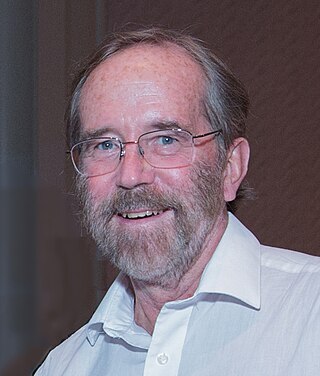
Joseph "Joe" E. Greene, known in his professional writing as J. E. Greene was an American materials scientist, specializing in thin films, crystal growth, surface science, and advanced surface engineering. His research and scientific contributions in these areas have been described as "pioneering" and "seminal" and that his work "revolutionized the hard-coating industry".
References
- ↑ Petkewich, Rachel (16 January 2006). "An Essential Craft". Chemical & Engineering News. 84 (3): 9–15. doi:10.1021/cen-v084n003.p009 . Retrieved 14 April 2017.
- 1 2 Walas, Joe. "Scientific Glassblowing Schools and Courses". The Scientific Glassblowing Learning Center. Safety Emporium. Retrieved 14 April 2017.
- ↑ "Glass Science Graduate Programs". Inamori School of Engineering. Alfred University. Retrieved 14 April 2017.
- ↑ https://www.thefreelibrary.com/The+meeting+on+the+beach%3a+Compton%2c+Oppenheimer%2c+and+the+atomic+bomb.-a0240992474
- ↑ American Scientific Glassblowers Society home page, retrieved 2015-05-15.